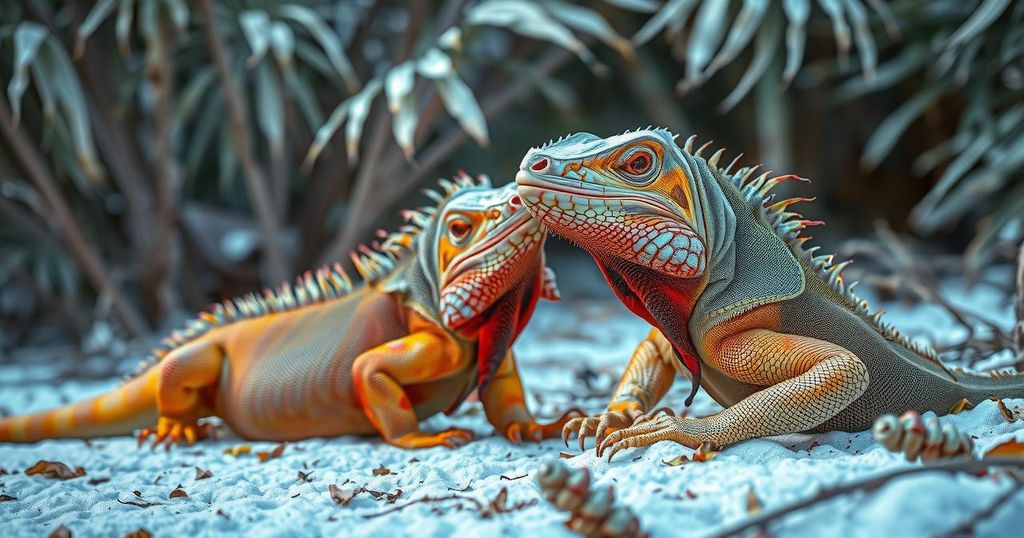Cold Snap in South Florida Alerts Residents of Potential Iguana Falls
South Florida is bracing for a cold snap that may cause iguanas to fall as temperatures drop below 50 degrees. The region is expecting lows of 49 degrees, the coldest in nearly two years, while a severe storm system affects the central U.S. Heavy snows and winter conditions are causing issues elsewhere, contrasting with the cold yet sunny forecast for South Florida.
Residents of South Florida are preparing for an unexpected cold snap that may result in the phenomenon colloquially termed “falling iguanas.” Weather forecasts indicate that temperatures could fall below 50 degrees Fahrenheit this week, particularly with a predicted low of 49 degrees, marking the coldest weather the region has experienced in nearly two years. Local meteorologist Brandon Orr noted that this chill is likely to stun the green iguanas, which frequently inhabit the area.
On Saturday, Miami recorded a low temperature of 55 degrees, while locations like Kendall and Pompano Beach reached even cooler lows of 51 degrees. In the mid-morning hours, temperatures did climb into the high 50s and low 60s. On Sunday, higher temperatures are anticipated, with highs potentially peaking at 75 degrees before a substantial cold front interrupts local weather patterns. This front, arriving Monday night, is expected to lead to afternoon highs in the upper 60s and sharp nighttime lows.
In contrast to South Florida’s chilly forecast, a severe storm system is wreaking havoc across the central United States, affecting areas from the Ohio Valley to the mid-Atlantic. Heavy snow, sleet, and ice are predicted, leading to perilous travel conditions and potential power outages across these regions. Furthermore, some areas in the Deep South, including Mississippi and Alabama, may experience severe weather conditions such as tornadoes. Regardless of the cold snap, South Florida residents can expect some sunshine in the afternoons, providing brief respite from the chill.
This article addresses the occurrence of colder weather in South Florida, an unusual event for a region typically known for its warm, tropical climate. This phenomenon specifically highlights the vulnerability of green iguanas to extreme temperature drops. The iguanas, which are an invasive species in the region, typically thrive in warmer conditions but become dormant and fall from trees when temperatures decrease significantly. Furthermore, it draws a comparison to the severe winter weather conditions impacting other regions of the U.S., thereby providing a wider context for understanding the current weather events in South Florida.
In summary, residents of South Florida are on alert for a significant cold snap that could shock the local iguana population, with temperatures anticipated to dip below 50 degrees. While some areas within the state may briefly experience warmer weather, a strong cold front is expected to bring more severe temperature drops. The cold weather stands in stark contrast to the severe winter storms affecting the central U.S., illustrating the diverse weather conditions occurring across the country at this time.
Original Source: www.local10.com




Post Comment